The History of Peugeot
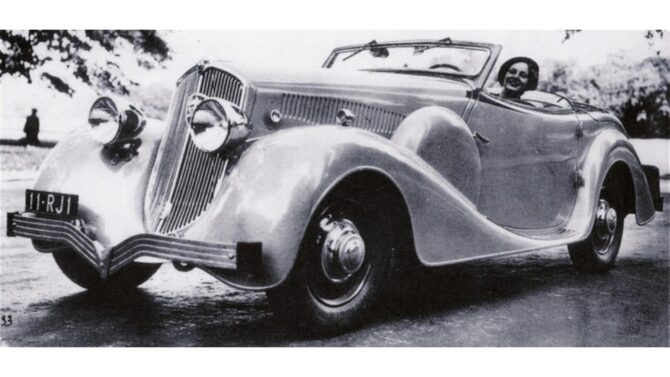
It’s over 200 years since the Peugeot brothers set up their steel business in a small village in eastern France. Jon Bryant charts the history of the car-maker that became a national treasure…
It was in 1810 that the Peugeot brothers first started producing steel in their father’s cereal mill in the small French town of Hérimoncourt in eastern France. Two centuries on and Peugeot has grown to be one of France’s most celebrated companies – in 2009 it was the leading French car manufacturer and tenth in the world. But it all began when Jean-Pierre and Jean-Frédéric first dragged a tiny corner of France into the industrial revolution.
Coffee grinders, saw blades and steel rods for crinoline dresses were the first products made by the brothers who formed La Société Peugeot-Frères et Jacques Maillard with their partner, son of a local watchmaker.
The age of the bicycle arrived and in 1885 Peugeot, equipped with its steel mill, could begin producing spokes, chains and frames. Its first automobile arrived and a decade later, Peugeot was manufacturing a quarter of all French cars, (around 300 a year). Four years on, although they may well have looked like shoeshine chairs on wheels, half of the cars in France were produced by Peugeot.
True expansion began after World War I as demand for more varied cars grew and in 1929, Peugeot instigated the numeric identification system that is still in use today. The 201, so named because it was the engineering department’s 201st project, was the first car to carry a number. This eventually grew into the three-digit naming system we use; the first digit shows which family the vehicle belongs to and the third number indicates the model’s generation.
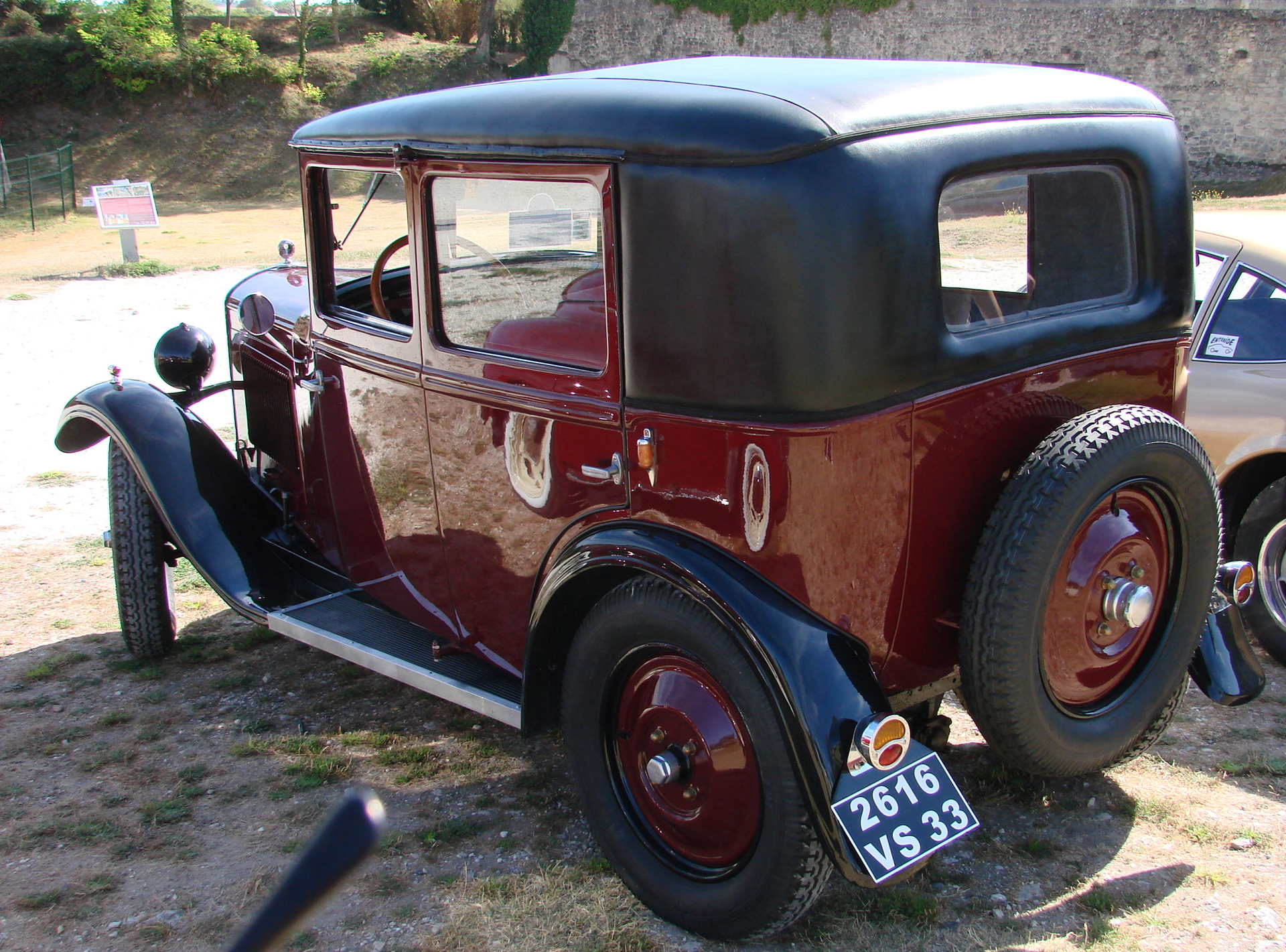
Peugeot 201 at the 2012 heritage days in Blaye, Photo: Xabi Rome-Hérault/Wikimedia Commons
In 2000, letters were added to the three numbers to designate specific body shapes and in 2004, 75 years after the 201, Peugeot added a four-digit naming convention for models that were not part of the original range, starting with the 1007.
Having had a century’s head-start, Peugeot was joined by Renault and Citroën to form a triumvirate of massive French car manufacturers, each with a slightly different image – Peugeot perhaps became the more conventional choice. However, there were some amazing design exceptions. The 504 coupé of 1968 – displaying the strong influence of Italian car designers Pininfarina – was stunning, and the same designer was involved in the 1987 release of the beautifully curved 405 coupé.
Pininfarina was also involved in the car that perhaps changed Peugeot’s image forever. In 1983 this rather staid manufacturer came up with the 205. The car gave the public a supermini or ‘hot hatch’ that altered the consumer motor industry for good. It changed the way kids were dropped off at school and the way couples drove home from the supermarket. The 205 GTi, with its wide, flat loadspace, even changed the way they threw the shopping bags in the boot before scorching home.
Everyone wanted one, except those with big families. Besides the ‘car of the decade’ 205, Peugeot is best remembered for those super-long estate cars. The 504 Breaks and 505 wagons (ungainly, low-slung precursors to modern MPVs) could carry an entire nursery school class to the zoo. The 504s haven’t been manufactured in Europe since 1983 but are still used as bush taxis in Africa.
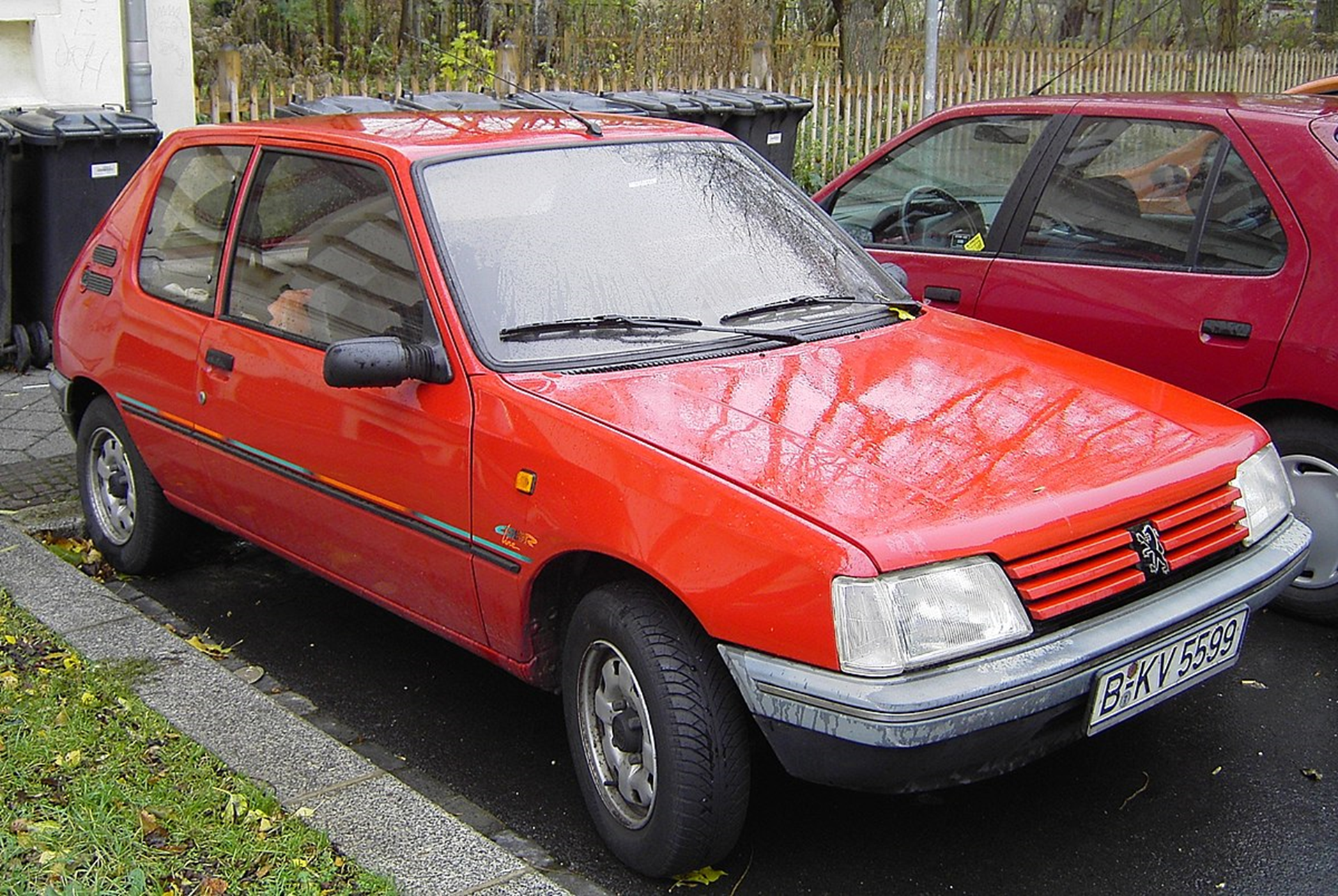
Peugeot 205 Color Line, Photo: CrazyD/Wikimedia Commons
Nothing to do with driving across the Serengeti or Peugeot’s many Dakar Rally successes, Peugeot’s trademark lion was created by the jeweller and engraver Julien Blazer in 1847. It immediately identified all of Peugeot’s products, particularly the company’s handsaws which had powerful teeth, a strong line and a swift cut – just like a lion. The logo first appeared on a car in 1906 when it depicted the lion walking across a giant arrow.
Cars carried the lion on their boots and then bonnets. On bikes it appeared in front of a spoked badge, still balancing on its arrow. Two hundred years later, the lion is more dynamic- looking, more muscular, dominant but less heraldic in appearance – and perhaps a little less pemaps a friendly than its predecessors. The Peugeot company split into two in 1926, separating the car division from the highly profitable bicycle manufacture. Certainly for anyone around during the 1970s’ bicycle boom, Peugeot meant steel- framed racing bikes, tight woollen tops with a zip and tyres as thin as a ballpoint pen.
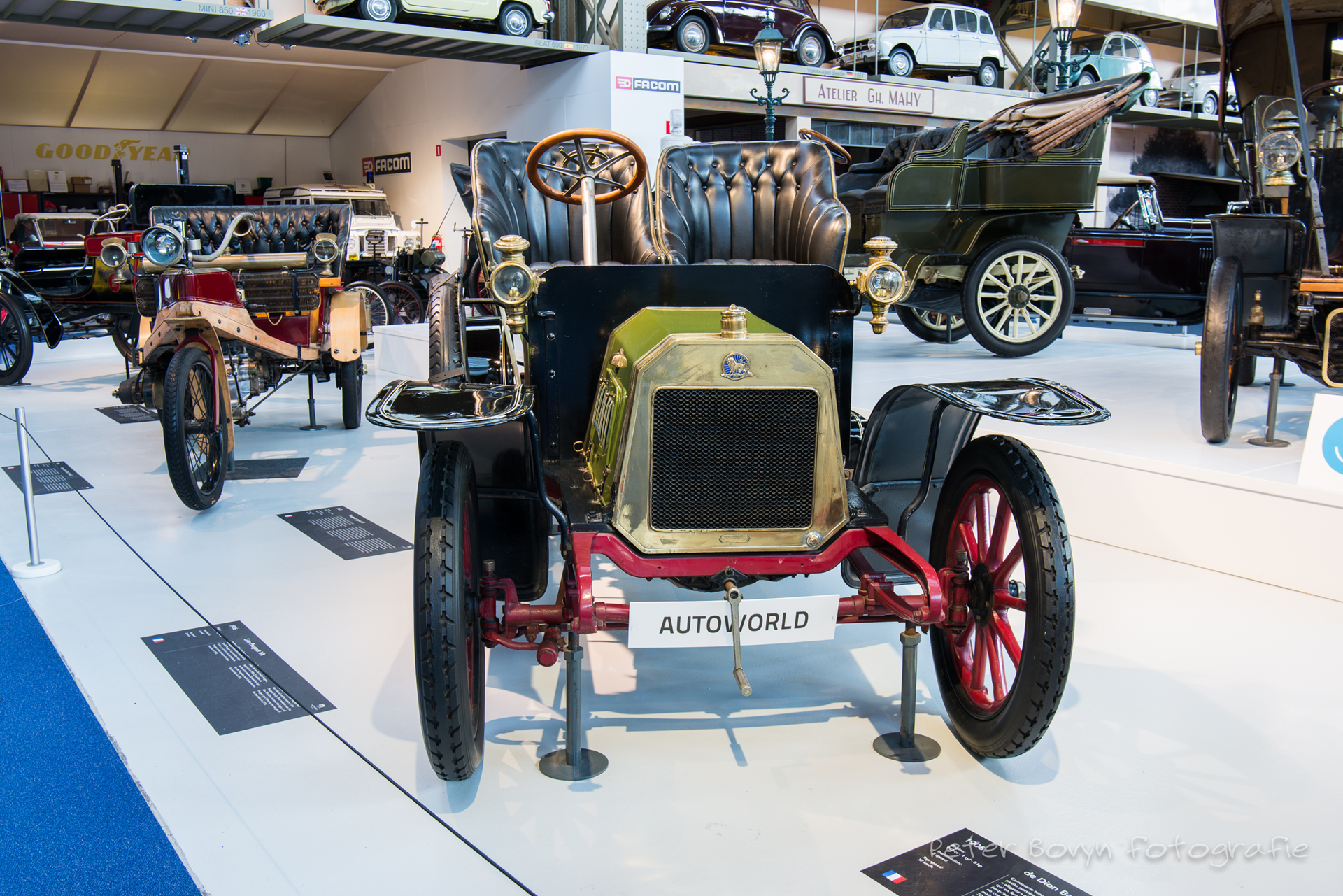
Lion-Peugeot Type VA – 1906, Photo: Perico001/Flickr
Peugeot’s first bicycle was called Le Grand Bi. Hand built by Armand Peugeot in 1882, it is a type of penny-farthing, with a huge front wheel (with a 1.3 metre-diameter) and saddle mounted over a tiny wheel. It looks frighteningly uncomfortable and almost impossible to ride. The brothers opened a less shop in Paris at 32 Avenue de la Grande Armée, and were soon making bikes with two similar sized wheels. In 1890, it developed the Lion bike, an ultralight machine at 22 kilograms, (a modern, titanium-framed bike weighs about 7 kilograms), and sales soared.
Peugeot bicycles were built in the factory in Beaulieu, Doubs, where they continued being manufactured well into the 1970s, by which time, bike mania had arrived and the Peugeot family had created an atelier prestige (luxury division) for hand- built machines for professional cyclists.
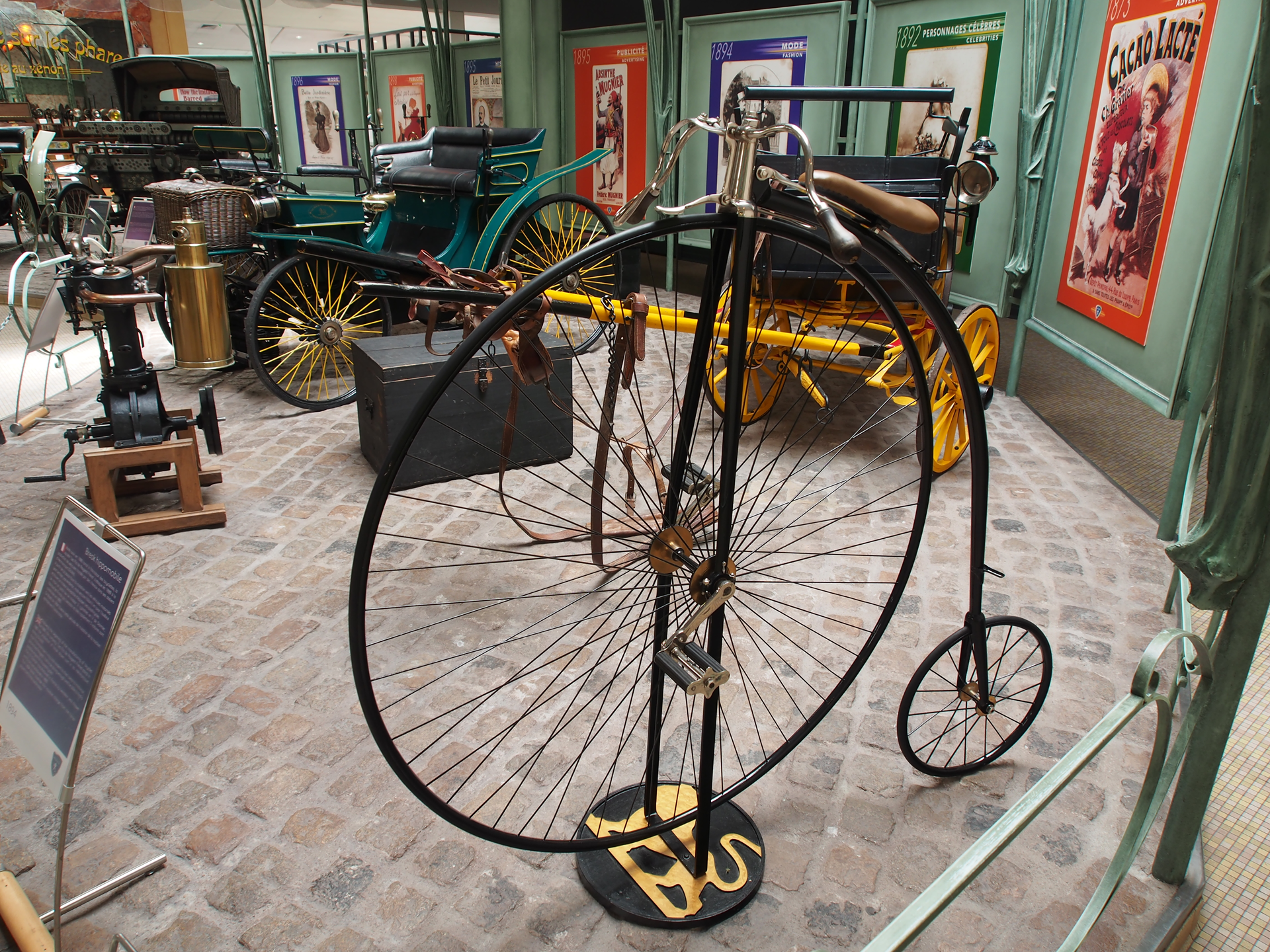
Peugeot Grand-bi photo, Photo: Alf van Beem/Wikimedia Commons
Team effort
The group had its own racing team and between 1903 (the start of the Tour de France) and 1983, Peugeots were ridden to victory ten times in the Tour. The fantastically-named Hippolyte Aucouturier also rode a Peugeot when he finished fourth in the 1904 Tour but was later disqualified after it was discovered that he (and the top three other finishers) may have used ‘other’ types of Peugeot too, namely cars (and trains) to arrive first in Paris.
Peugeot joined forces with BP, Michelin and later Esso to sponsor its team and members included the Belgian Eddy Merckx in his early career, Pottier, Thys, Petit-Breton, Thévenet and Pingeon, who all won the Tour, and the British and Irish riders, Robert Millar, Sean Yates and Stephen Roche, who began racing with Peugeot.
The most famous Peugeot rider, however, never won the Tour. British cyclist Tom Simpson was wearing the black-and-white-checkerboard Peugeot BP team cycling jersey when he collapsed a kilometre from the summit of Mont Ventoux during the 1967 Tour de France. Images of him zigzagging up the steep mountain in the Peugeot top were flashed across the world. It was a strange kind of publicity considering Simpson died, but the way he rode – fearless, fierce and passionate – helped turn the Peugeot jersey into a symbol of bravery, of man pushing himself to the limit.
Peugeot pedal power
Six years later, the OPEC oil crisis struck and in the bike boom that followed, if you didn’t have a Raleigh, you definitely had a Peugeot and if you were really serious about cycling you probably had a PX-10. Peugeot produced them in their thousands and in a vast range of variants. If it was too expensive to drive a Peugeot, you could pedal one and if that was too tiring, you could always buy a Peugeot motor scooter to help you up the hills. Peugeot’s third historic form of transport lines the boulevards of France’s big cities but can equally be heard, often late-at-night, struggling up a hillside in the Luberon, laden with baguettes, a chicken and an old man in dungarees.
Peugeot first added petrol power to its bicycles in 1898 at the Beaulieu plant and in 1904, Peugeot motorcycles set the world speed record. Today, the marque is the oldest manufacturer of motorised two- wheel vehicles in the world.
It also unveiled its production model E-Vivacity, a 100 per cent electric scooter which can run for up to 62 miles before needing recharging – that’s London to Brighton, plus a short ride along the coast to catch up with the Lambrettas and Vespas.
Peugeot has also launched its HYbrid 3 Evolution – a three-wheel scooter concept with hybrid technology and 3008 Crossover with HYbrid4 technology – which will be the first diesel-hybrid on sale in the UK, as well as the Peugeot ion, its first electric car and an electric bicycle. It had 14 new models scheduled to appear between 2010 and 2012 – this was in addition to the company’s new tools, grinders and electronic pepper mills which it has continued to manufacture for the past 200 years.
Looking for more travel inspiration?
France Today is the world’s leading travel and lifestyle title about France, with a magazine and website that appeal to Francophiles around the globe.
Lead photo credit : Peugeot_301_Eclipse_1934_Pourtout, Photo: Kévin Pourtout/Wikimedia Commons
Share to: Facebook Twitter LinkedIn Email
More in Cars, history, Peugeot


